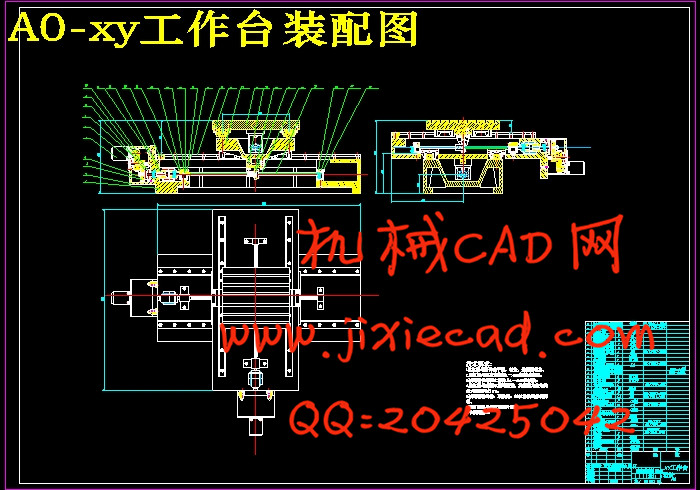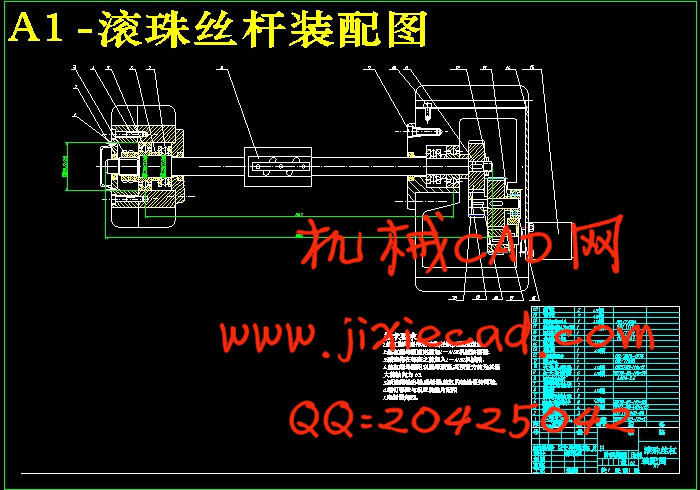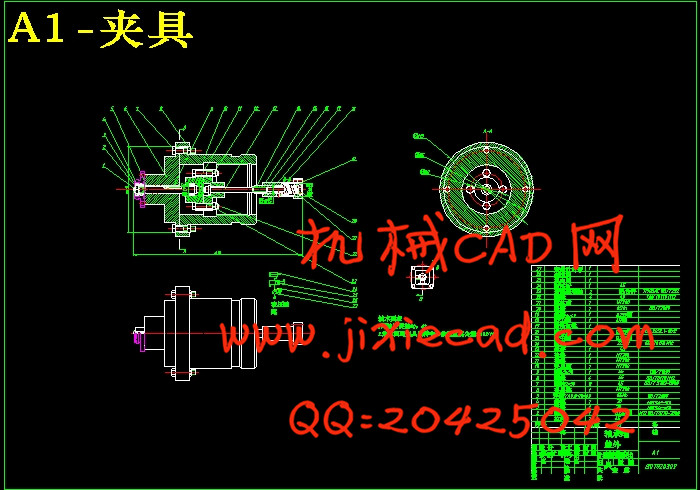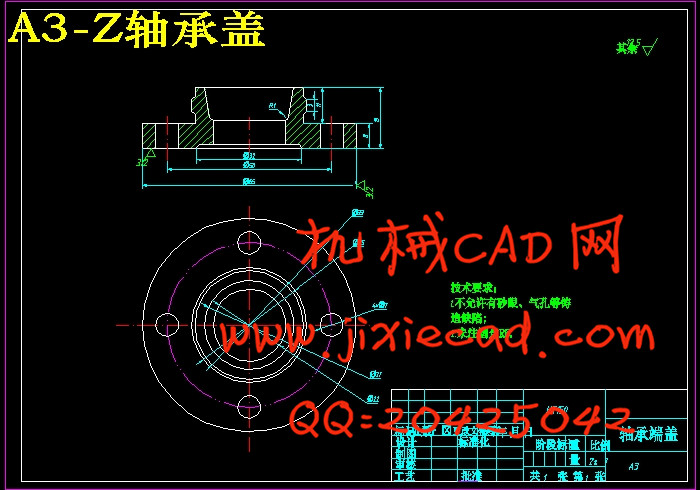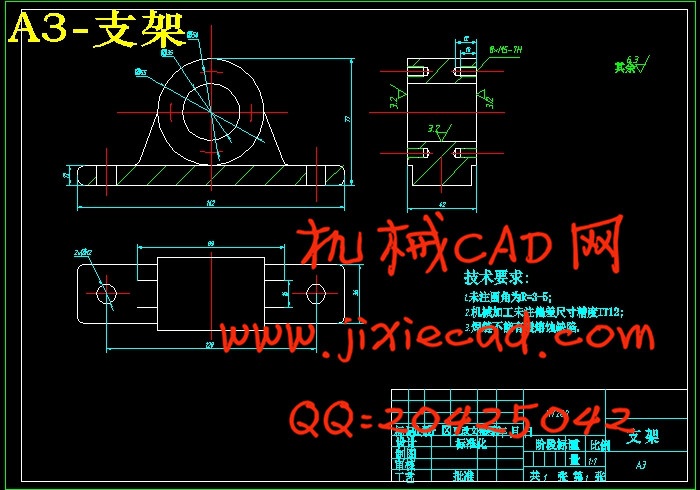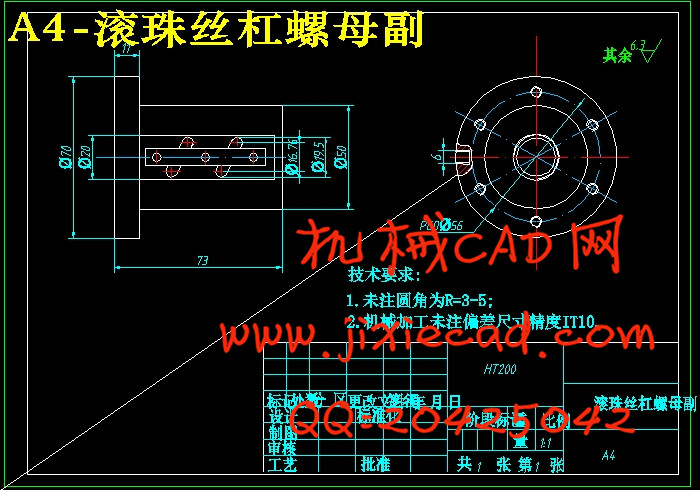设计简介
磨料水射流二坐标工作台设计
为实现磨料水射流加工的高效性,本文对X-Y工作台进行了设计,主要是对工作台的机械部分进行了设计,对滚珠丝杠、滚动导轨、步进电动机等做了设计计算及选用,并对联轴器进行了分析和选择。
关键词:磨料水射流;工作台;滚珠丝杠;步进电动机
Design of Second Coordinate Table for Abrasive Water Jet
In order to achieve the efficiency of Abrasive water jet machining, it includes XY table was designed mainly for the mechanical part of the table, on the ball screw and rolling guide, stepper motors and selection of design calculations made , and the coupling is analyzed and choice.
Key Words: Abrasive water jet;Table;Ball Screw;Stepping Motor
摘 要
该课题是精密加工研究所承担省教育厅研究项目09JK499“基于人工智能的磨料水射流切割机的工艺参数优化方法研究”的一部分。该项目主要研究磨料射流切割机原理和工艺规律,设计相关实验装置满足学生参加工艺实验。本课题主要是磨料水射流实验装置设计的一部分。为实现磨料水射流加工的高效性,本文对X-Y工作台进行了设计,主要是对工作台的机械部分进行了设计,对滚珠丝杠、滚动导轨、步进电动机等做了设计计算及选用,并对联轴器进行了分析和选择。
关键词:磨料水射流;工作台;滚珠丝杠;步进电动机
Design of Second Coordinate Table for Abrasive Water Jet
Abstract
This projet is a part of the province education Department research report 09JK499:the study on the technological parameters optimiaion for Abrance waterjet acting machine based on artificial intelligence. The project research abrasive water-jet cutting machine principle and technology law, design related experiment device satisfy students attend process experiment needs. This topic is a part of abrasive water-jet experiment device.In order to achieve the efficiency of Abrasive water jet machining, it includes XY table was designed mainly for the mechanical part of the table, on the ball screw and rolling guide, stepper motors and selection of design calculations made , and the coupling is analyzed and choice.
Key Words: Abrasive water jet;Table;Ball Screw;Stepping Motor
目 录
英文摘要 II
主要符号表 III
1 绪论 1
1.1课题背景 1
1.2课题研究意义 1
1.3国内外研究的相关情况 2
1.4本文主要研究工作 3
2 总体方案的确定 4
2.1伺服系统的选择 4
2.2X—Y工作台的传动方式 4
3 机械部分设计 6
3.1确定系统脉冲当量 6
3.2工作台外形尺寸及重量初步估算 6
3.3滚动导轨的计算、选择 7
3.4滚珠丝杠计算、选择 8
3.4.1强度计算 9
3.4.2传动效率计算 11
3.4.3稳定性验算 11
3.4.4丝杠轴承的具体选择: 12
3.4.5刚度验算 12
3.5步进电机减速箱的选用 13
3.6步进电机简介、计算、选型 14
3.6.1步进电机的简介及原理 14
3.6.2 步进电机惯性负载的计算 14
3.6.3 步进电机转轴上的等效负载转矩 15
3.6.4 步进电动机最大静转矩的选定 17
3.6.5 步进电动机的性能校核 18
3.7联轴器的选择 19
4 夹具设计 20
4.1 设计要求 20
4.2夹具设计 21
4.2.1定位基准的选择 21
4.2.2切削力及夹紧力的计算 21
4.3 定位误差分析 22
4.4 夹具设计及操作的简要说明 23
5 结论 25
参考文献 26
致 谢 27


